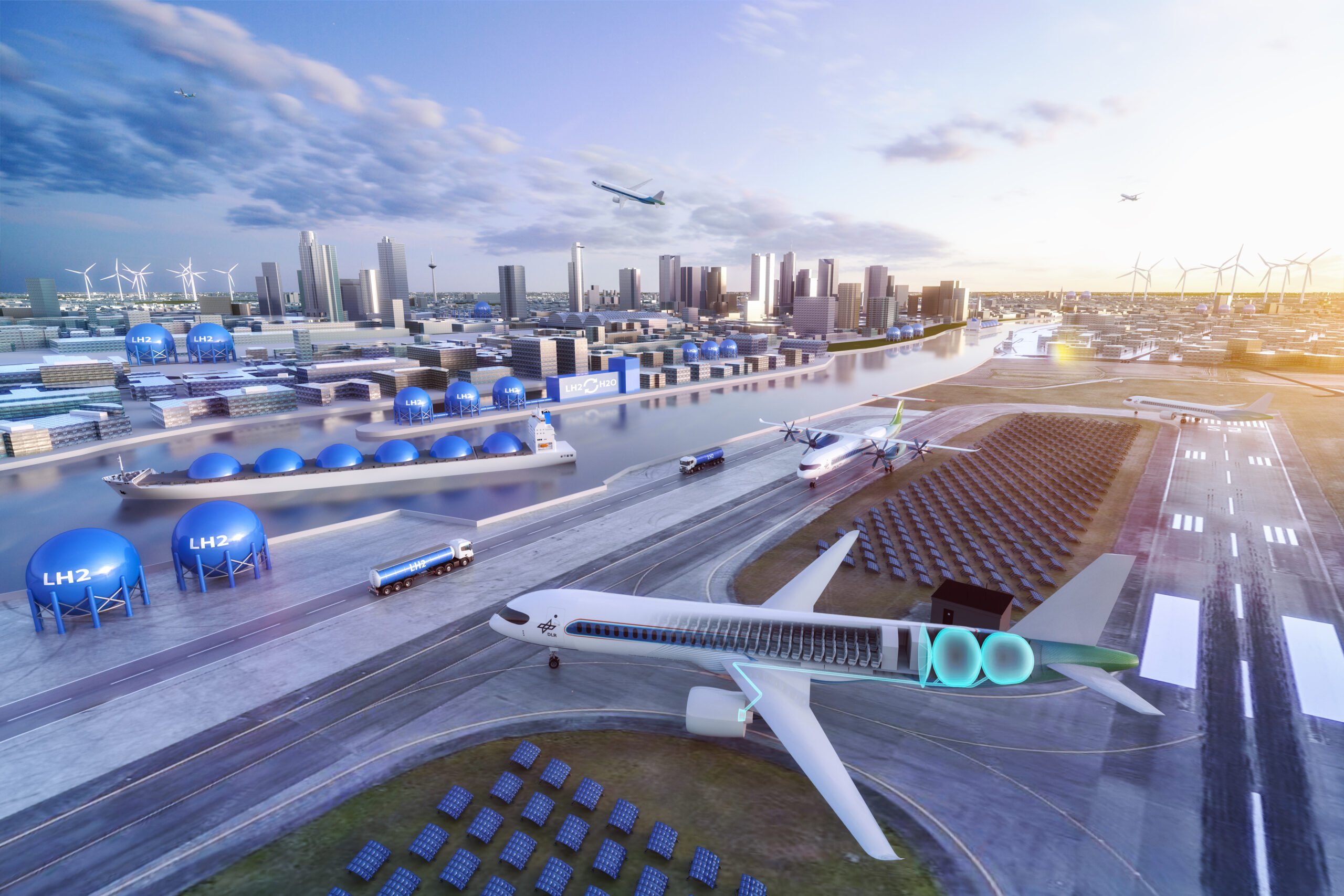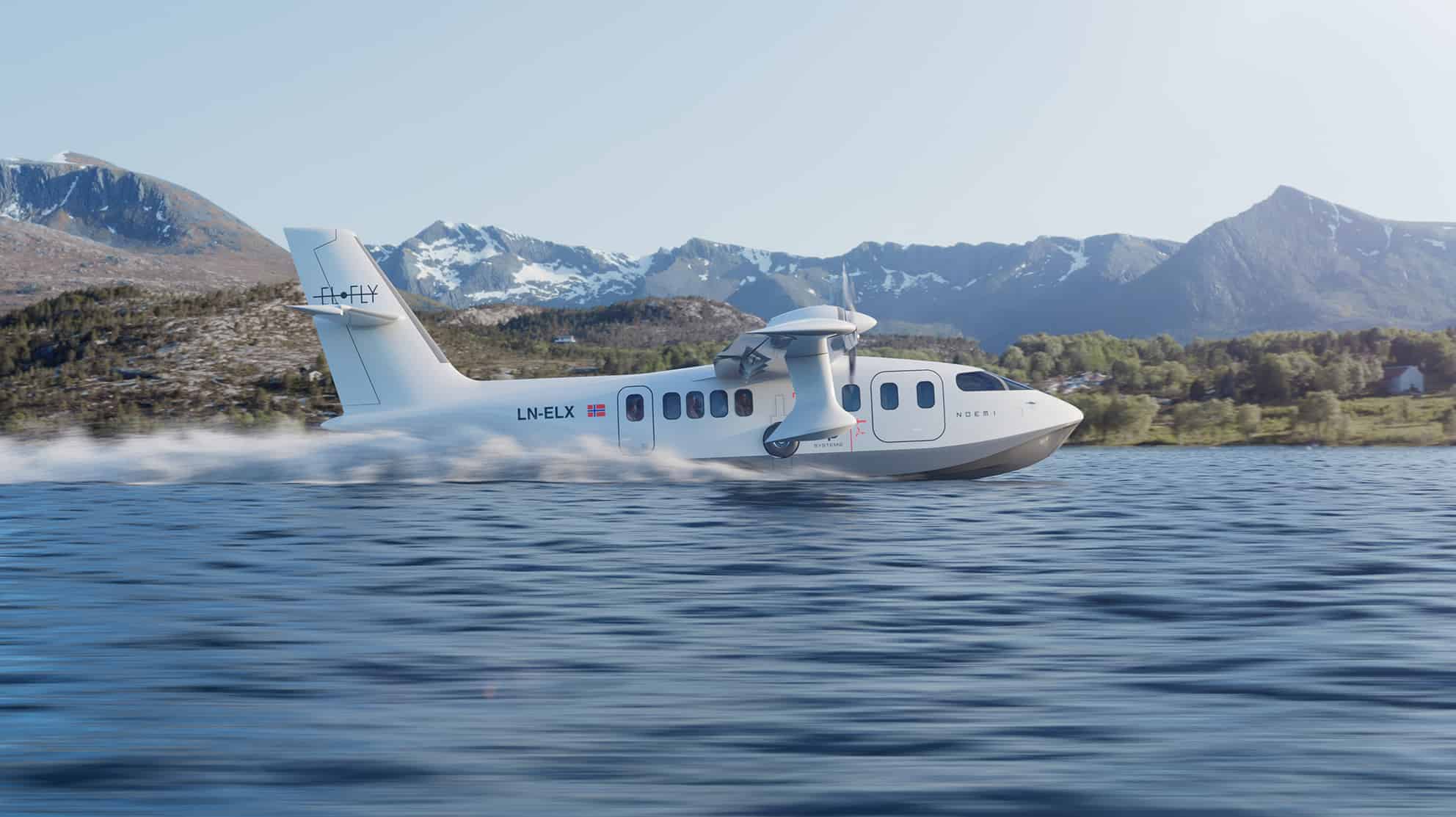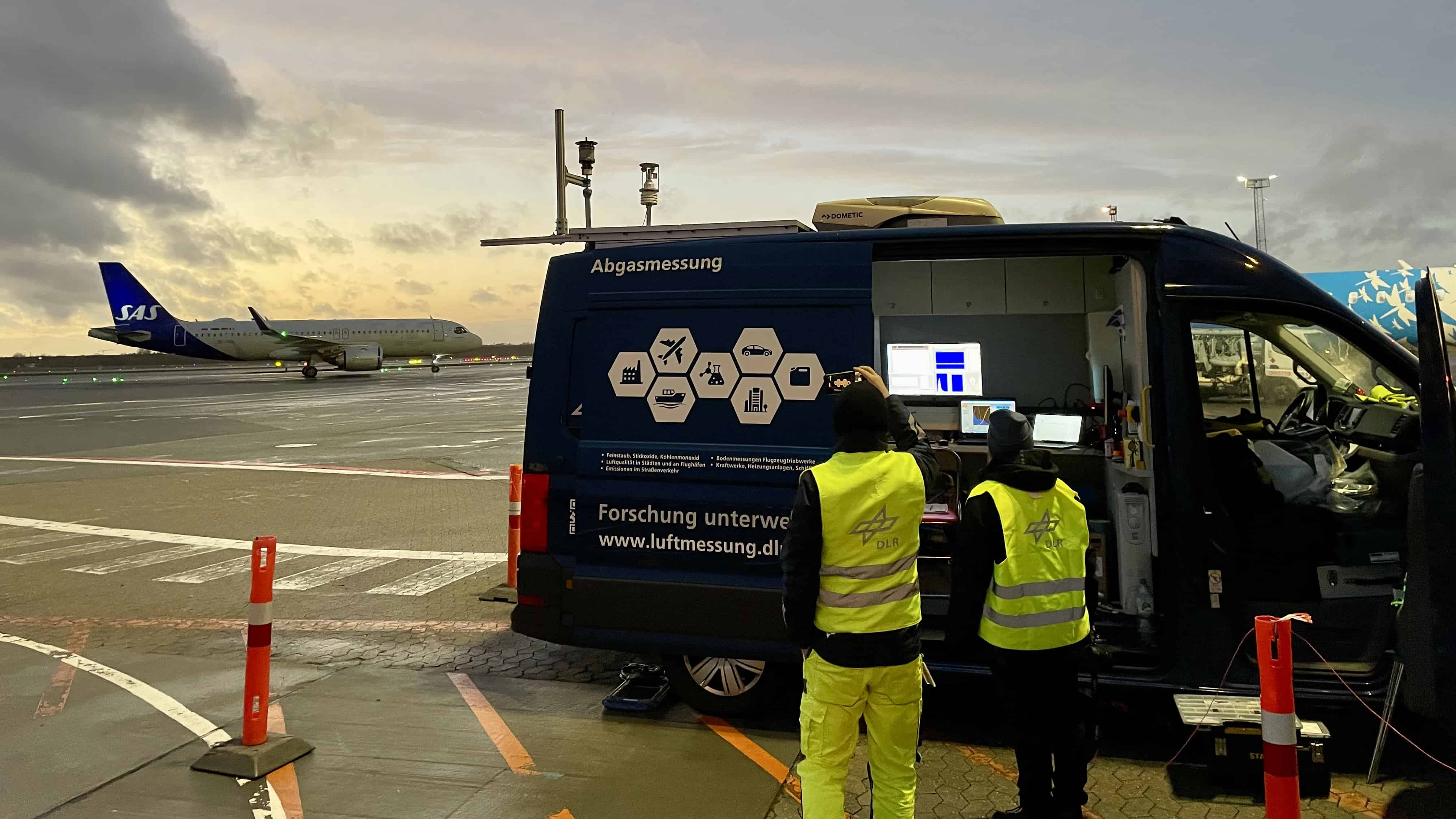
Just like everything else, the aviation sector needs to do something about its emissions. Aviation companies and countries have gotten together and set ambitious goals to reach zero emissions of CO2 and other greenhouse gases by 2050, but is that a realistic goal? Today, only one zero-emission aircraft is certified for use, a two-seater used for testing. Can the aviation sector manage to reduce their emission levels in time, or is it a utopian dream?
We’ve checked the green alternatives to today’s fossil-based aircraft and where the aviation industry stands today. What needs to be done so that you and I can continue to fly on vacation, work, and to visit family and friends without feeling the guilt of polluting the Earth?
What available options are there?
- Sustainable aviation fuels (SAF)
- Hydrogen-powered aircraft
- Jet aircraft fueled with hydrogen
- Hydrogen fuel cell electric aircraft
- Battery electric aircraft
What are SAF?
These are fuels chemically similar to fossil kerosene, but made of sustainable material such as fats and sustainable feedstocks, or synthetically produced. Synthetic fuels are very expensive and the production will cost a lot of energy. fuel SAF can be mixed with kerosene and some airlines already fuel their aircraft with it, but only in small quantities. For example, KLM fuels all their flights from Schiphol airport with 0.5 percent SAF.
What are hydrogen-powered aircraft?
Instead of using kerosene, liquid hydrogen can be burnt in a combustion process to fuel the aircraft. Hydrogen can also be used to power an electric fuel cell, which eliminates all CO2 and greenhouse gas emissions except water vapor.
What are battery electric aircraft?
Rechargeable batteries power the aircraft instead of traditional fuel.
What are the challenges?
- The production of synthetic fuels require a large portion of the world’s renewable energy.
- Hydrogen-based aircraft require extensive redesign of the airplane. The hydrogen needs more storage space than kerosene and also requires heavy fuel tanks with strong insulation. The tanks could be too heavy for the aircraft to take off.
- Today’s batteries are too heavy and inefficient to carry anything more than a small aircraft for a few hundred kilometers. The same distance can easily be covered by car or train.
- Countries and the EU need to develop new standards for certifying sustainable aviation technology, as it is still completely new.
When will emission-free aircraft be launched?
Some companies promise emission-free launches of smaller commercial aircraft in 2026, while experts think we will have to wait until the 2030s or 2040s before large commercial aircraft enter the market.
Where are we today?
The car, train, and shipping industries have already taken huge steps towards an emission-free future, but the aviation sector lags behind. Aircraft are highly complex, with multiple subsystems and components working together with a weight limit to get the plane off the ground.
Today, the aviation industry comprises 13.7 percent of all CO2 emissions from transportation and about 3.8 percent of total emissions in Europe. On top of that come other greenhouse gas (GHG) emissions such as nitrogen oxides, water vapor, and sulfate and soot particles at high altitudes. Less than 20 percent of the world’s population has ever flown, so the emissions are tied to a luxury sector available to only a small part of the world’s population. Unless we want to restrict our own flying habits or introduce flight quotas for each person, something must be done with the aircraft and fuel used.
The mission to make air travel greener is far from a new concept. “The first emission-free aircraft was already flown over 30 years ago by a Russian aircraft manufacturer. It flew on liquid hydrogen and worked quite well,” says Paul Peeters, professor in sustainable tourism and transport at Breda University of Applied Sciences, Netherlands. But the project stopped shortly thereafter because falling oil prices made kerosene jet fuel too cheap for airline companies to pass up. Today, the situation is quite different. Oil prices have again been increasing after Russia’s invasion of Ukraine, and companies – including oil giants to a small extent – have a greater will to look for green solutions.

But first, what’s the situation like today? Both aviation companies and countries have implemented measures to make flying greener. Carbon offsets are implemented on nearly every flight within Europe. But although the International Air Transport Association describes it as an “immediate, direct and pragmatic” solution, at least on a short term basis, carbon offsets are criticized for not bringing any direct environmental changes to the airline industry.
Sustainable Aviation Fuels (SAFs) are made of fats and sustainable feedstocks with a chemistry similar to that of traditional kerosene jet fuel. SAFs can reduce CO2 emissions by up to 80 percent and are considered a good alternative energy source for long haul flights up to 7,000 km.
But SAFs are expensive and used in small quantities. At Schiphol airport in the Netherlands, KLM adds 0.5 percent SAF to all their outgoing flights, far from enough to make any meaningful contribution. Several European countries have made plans to increase their use of SAFs in the coming decade, although there might be a limitation to how much they can actually use. “If we changed all fuels to synthetic fuel, then we would need 20-60 percent of all renewable electricity in the world to produce them. That is too much for a small economic sector such as aviation,” says Paul Peeters. Or in other words: “Synthetic fuels play an important role, but are not the silver bullet.”
Luckily, new solutions are on the way. Scientists, research centers, and aviation companies are all competing to become the first to introduce flights using extensively adjusted jet aircraft fueled with hydrogen, fuel cell electric aircraft with hydrogen as fuel, and battery electric aircraft. These solutions have a huge advantage in that they can be made nearly completely emission-free and will be game changers in the world of aviation, but the technology is highly complex and requires tremendous changes to the design of the aircraft.
Hydrogen – a complex but long-term solution
Bjørn Nagel is a founding director at Deutsche Luft- und Raumfahrt (DLR), and his job includes figuring out the value of various green pathways for the airline industry. He believes that hydrogen is the future of aviation, both in a liquid form and as a fuel cell. “We have institutes working on the development of fuel cells, and other institutes developing solar cells that can produce electricity to then generate hydrogen,” he gives as examples.
Together with 54 other research institutes, one of the things DLR explores is how hydrogen can be used in aircraft, for example, by producing energy through liquid hydrogen combustion, which requires 20 percent less energy than synthetic kerosene. On the other hand, whereas synthetic kerosene could be used in engines similar to the engines used in aircraft today, since it can be used directly in combustion engines, liquid hydrogen cannot. It would therefore require changes to the design of the aircraft.
“Or we can use fuel cells to generate electricity, which is more energy efficient than combustion,” says Nagel, although this solution does bring with it technical challenges. “Hydrogen has a very high volume. If you want to put it on a plane, it would only make sense if you used it in a liquid state. But dealing with cryogenic fuel is very demanding from a technological point of view.”
In a liquid state, hydrogen requires four times as much storage space as kerosene and must be stored at a high pressure of around three bars. By comparison, if you go swimming in the ocean you will experience a pressure of one bar if you stay at surface level, and reach three bars if you dive 20 meters under the surface.

Today, fuel is stored in the wings of the aircraft, space that cannot be used for anything else. However, the flat shape of an airplane wing is not ideal for storing hydrogen which must be kept in a cryogenic state.
“One big sphere or one big ball would be the perfect shape. This is not so easy to accommodate in an aircraft that should be very aerodynamic. Good spots [to store the hydrogen] would be to just stretch the fuselage, and behind the passenger cabin, one large tank for the hydrogen might be stored. A different option would be to have large nacelles under the wings. So where there are motors today, there would be an electric motor, a fuel cell, and also a hydrogen tank under the wing,” says Nagel.
Keeping low temperatures
Creating storage space is one thing, keeping it at the right temperature is another. While kerosene turns into gas at between 150-300 degrees Celsius, hydrogen has a boiling point of -252.9 degrees Celsius. The fuel tanks would need strong insulation to keep the hydrogen in a liquid state, which in turn makes them heavier.
Today’s fuel tanks with strong enough insulation are too heavy to lift a standard airliner off the ground. Much lighter tanks need to be created, but even then there are more challenges to overcome: No matter how good the insulation is, there comes a point where the temperature inside the fuel tank reaches the boiling point of hydrogen. As the hydrogen turns from liquid to gas, it will expand and must be removed so the tank does not burst. One way to do this is to fuel the aircraft shortly before taking off, and defuel it when it is returned to the hangar to use the electricity for something else. Another option would be to keep one combustion engine which is optimized for burning hydrogen, while a hydrogen fuel cell generates the electricity needed for the aircraft’s onboard systems.
Hydrogen fuel cells would eliminate nearly all emissions, both CO2 and GHG, as long as the hydrogen is produced sustainably. Today, 95 percent of all hydrogen produced in Europe is based on fossil energy, which emits high amounts of carbon during production. Companies across Europe are trying to change this. Start-ups are popping up in Belgium, Spain, Germany, and Poland, while the Irish-Portuguese Fusion Fuel company aims to build new green hydrogen plants in both Spain and Morocco. Fuelled by green hydrogen, the airlines would still emit small amounts of greenhouse gas in the form of water vapor which create artificial clouds. This affects the climate negatively in the short term, but the problem is very easy to solve. “We usually fly at 10-11 km. If we can reduce this by 2-3,000 meters, then we will fly so low that there will be no negative CO2 effects,” says Nagel.
Despite its complexity, various airline companies have deemed hydrogen as the future of aviation. ZeroAvia aims to be first out by launching their commercial 19-seater between London-Rotterdam in 2024.
Airbus, AeroDelft, and H2Fly have all committed to building new emission-free hydrogen-based airplanes in the future as well, while Clean Hydrogen JU-lead project HEAVEN aims to develop a powertrain for an existing aircraft.
The future of battery-electric flights
What about electric flights – do they have a future? “Many are skeptical, it sounds a bit Mickey Mouse-like, but it is not,” says Arne Martin Gilberg, CEO of Start Norge, a company dedicated to establishing Norway’s first battery-electric airline route in 2026. On a broader scale, Europe’s first battery-driven flight is already up and running. In 2020, Pipistrel’s two-seater Velis electro became the first all-electric flight to receive its certification from the European Union Aviation Safety Agency (EASA). Velis electro is a small test aircraft with a range of 150 km. Tiny compared to commercial flights, but a step in the right direction. The companies Heart Aerospace, Lilium, Vertical Aerospace, and Eviation have already received large orders for their aircraft.
According to Peeters, battery-only aircraft are a solution for air taxis and the like, not for large airliners. But by using a combination of hydrogen fuel cells which create electricity for electric engines, the flight range can be scaled up to medium-haul and even a bit beyond. Only very long flights, such as from London to Sydney, would be hard to service with such aircraft.
“The improvement of batteries is about 5 percent per year. If you use the one certified aircraft [Pipistrel’s Velis electro], you see the performance of the aircraft with a range which is now something like 150 km. Many people drive 150 km just to get to the airport, so right now it is not feasible to travel long distances. If you have an improvement of 5 percent per year, you can have a ballpark estimate of in which year we can have which range. I think it’s something like 20 years before we have something that is really usable and makes sense for an aircraft,” says Nagel.

There are, however, exceptions to the rule. Battery-electric flights can be useful for shorter distances for destinations a car cannot cover, such as island hopping. These alternatives may also come sooner than 20 years into the future. According to Gilberg, the aviation developers he and Start Norge work with state it is feasible to establish a battery-electric flight route between the two Norwegian cities Stavanger and Bergen as soon as 2026. It would be a short flight with a distance of 160 km and space for 9-19 people. It would be a vast improvement from today’s jet-fuel flights or a 5-hour car ride between the fjords that separate the two cities.
When can we expect to travel green?
Several companies have announced their participation in the race towards becoming the first to offer zero emission flights. Besides those already mentioned, we also have AeroDelft, Widerøe, Volocopter, and Wright Spirit. Widerøe, Electron Aviation, and Wright Spirit have all set 2026 as their launch year. As usual, some seek to beat this deadline. ZeroAviation is working to establish electric aviation between Rotterdam-London already beginning 2024.
“One must learn to crawl before one can walk,” says Gilberg about the future of electric aviation. Companies aim to cover ultra-short travel routes of just a few hundred kilometers before they take it upon themselves to fly short- or mid-range distances. With the notable exception of Wright Spirit, all companies aim for smaller few-person aircraft. It may not cover the most polluting flight routes, but it is a start.
While the flight length or passenger number is generally agreed upon, researchers believe we must wait a bit more patiently for emission-free air travel than companies suggest. Nagel estimates that the first hydrogen-based aircraft will come to market in 2035. “It will be challenging, but not impossible,” he says. Commercial electric flights will take a bit longer, and will most likely roll out in the 2040s.
Peeters also expects electric airlines to take a long time to take off. “You need to first develop and certify fuel cell aircraft, and then slowly replace the old aircraft, and this takes 40-50 years. Realistically, in 2085 all these short-haul routes can be electric. For the medium-haul routes, flights longer than 3,000 km will be available 5-10 years later, so in 2090. Then for longer haul routes, aircraft will be ready by the end of this century,” Peeters says.
We don’t know how expensive kerosene will be in the future, but we know that right now, sustainable aviation alternatives are more expensive than today’s jet fuel-based flights. The cost-parity between the two is expected to change when the demand for green alternatives increases, but by how much, and the consequences of it, remains to be seen. Some, such as Nagel, believe airline prices will increase. Others, such as Brendan van Schaik, founder of Falcon Electric Aviation and team member of ABC You Later, believe that ticket prices will decrease with electric aviation. The real answer lies in the future.
But first, certifying the aircraft
Developing the technology is one thing. Before the aircraft can be used commercially, it must receive proper certification. EASA is currently developing a framework for the regulation of electric and hybrid propulsion, and together with MTU Aero Engineering, they aim to develop a certification path for hydrogen fuel cells.
According to Gilberg, the certification process for the first emission-free aircraft could take longer than for conventional aircraft, as the technology to be quality checked is completely new. In turn, the longer certification process ensures that the new aircraft are completely safe when rolled out on the market.
While it looks like it will take a long time and a lot of money, before you and I can fly around the world in a sustainable aircraft, a lot of development has to happen. States and companies are working hard, and working together, to make this a reality. And while we wait for the zero-emission aircraft, we can still enjoy the smaller effects of reduced emission alternatives.
Support us!
Innovation Origins is an independent news platform that has an unconventional revenue model. We are sponsored by companies that support our mission: to spread the story of innovation. Read more.
At Innovation Origins, you can always read our articles for free. We want to keep it that way. Have you enjoyed our articles so much that you want support our mission? Then use the button below:







